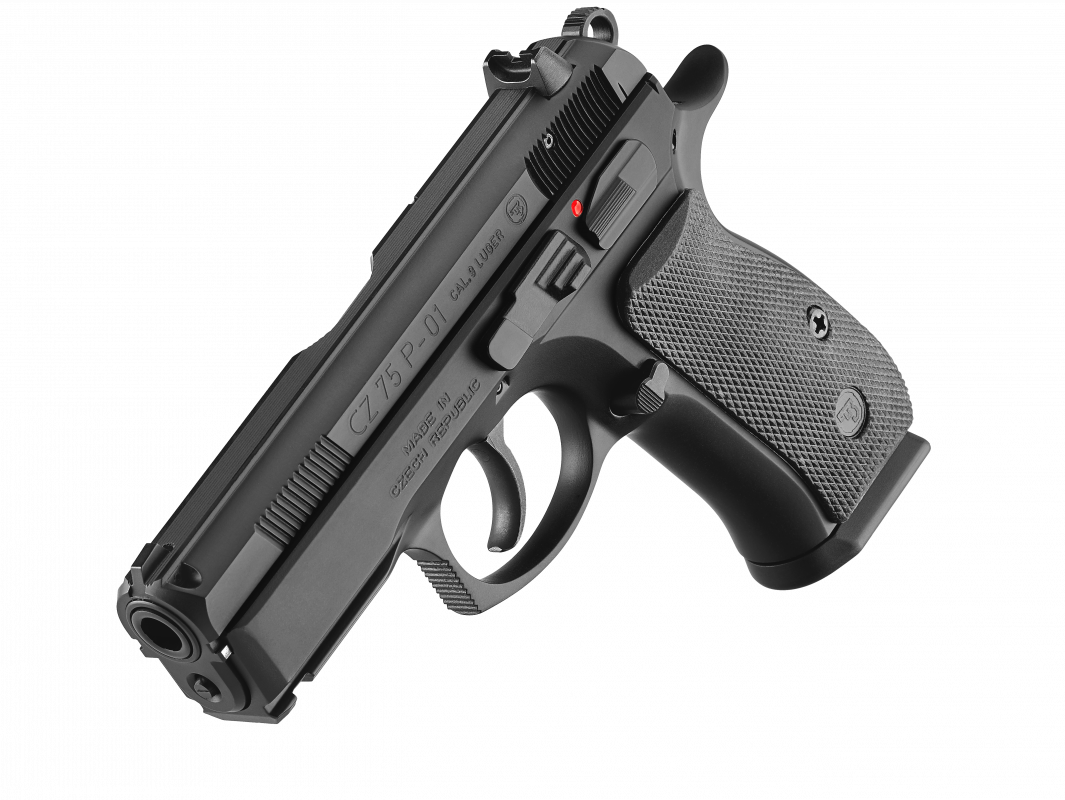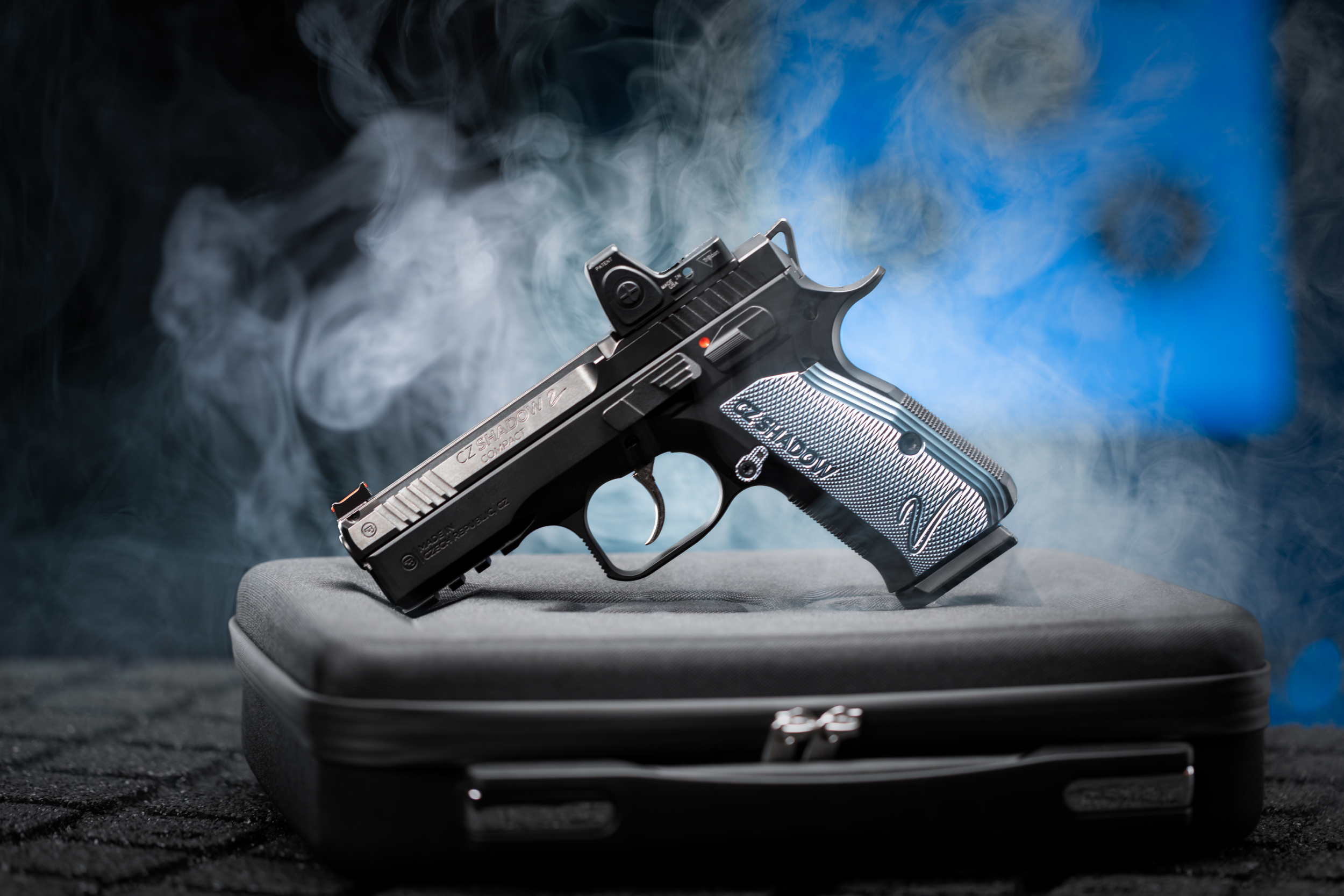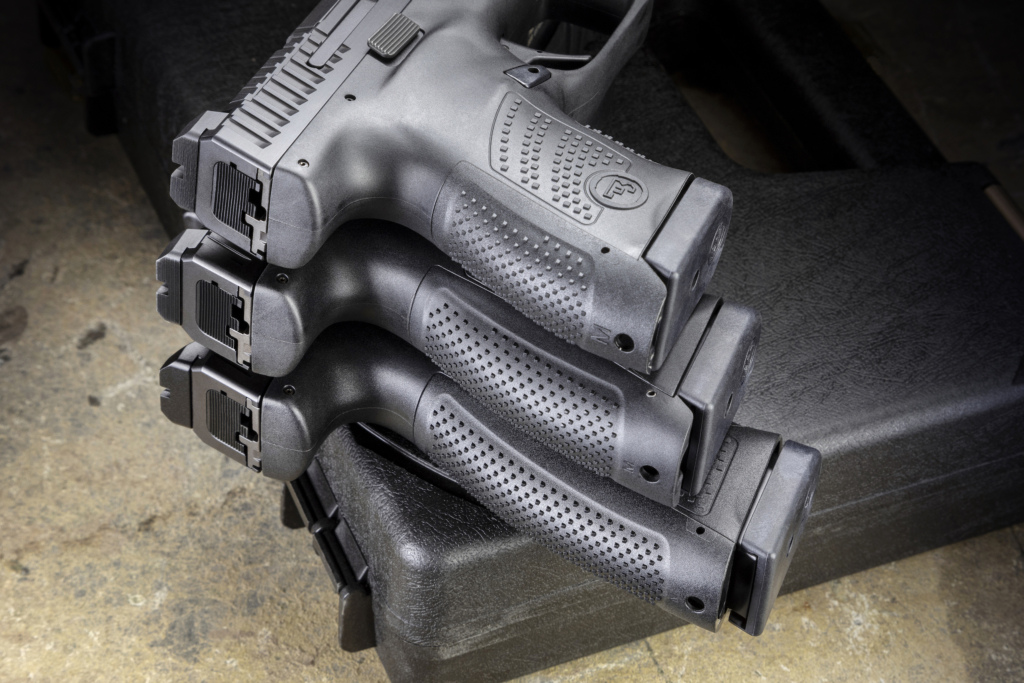Sizing up semi-automatic pistols
The semi-automatic pistol landscape has experienced impressive growth over the years, with more designs, sizes, calibers, features, controls and configurations available than ever before. Among these, size is one of the most important to consider when deciding on a new pistol. But the process of choosing the right size is far more involved than just what “feels good” or is simply in the caliber you require.
The myth about size
It’s a common misconception that the size of a pistol is directly related to the power it provides. The larger the pistol, the more powerful. The smaller the pistol, the less powerful. Although size can be a good indicator of power, it’s can’t always be relied upon. In fact, a “full-size” pistol could be chambered for a 22 LR cartridge, while a “micro” could be rockin’ a 45 ACP!
Don’t let size mislead you when assuming the caliber of a pistol, especially with the many models available in today’s marketplace.
How is size determined
What characteristics determine the size category of a pistol? Well, there is no firm rule in place for determining size, but the relevant factors that are taken into account are the length of the barrel, size of the frame, overall length and magazine capacity.
A quick note on barrel length
Before we get into the different size categories, it would be good to quickly speak a little about barrel length. The length of the barrel has a considerable impact on many characteristics of a pistol besides helping to determine its size.
A longer barrel increases the accuracy of a pistol, as it provides a longer sight radius (distance between the front and rear sights) for more accurate aiming. In addition, a longer barrel allows for a higher velocity when projectiles exit the muzzle, which further helps with accuracy and gives the pistol a longer effective shooting range.
Barrel length is also key for concealed carry. The shorter the barrel, the easier and more concealable a pistol will be. A shorter barrel reduces the weight of the gun as well, which is an additional advantage for concealed carry.
From big to small and everything in between
Among the many sizes and hybrids of semi-automatic pistols, there are four that can be considered the standard range – Full-size, Compact, Subcompact and Micro. In general, as you go from full-size to the smaller sizes, control, accuracy and ease of shooting will decrease.
Each size has its advantages and disadvantages, with the different size categories meeting the needs of different types of use and users. We’ll now go through each size to discover more about them and how they differ. Keep in mind that the measurements and weights quoted for each size category are in general and can vary from manufacturer to manufacturer.
Full-size
The biggest pistols are in the full-size category. They feature the largest frame, largest/longest grips and a barrel that’s normally 114 mm (4.5”) or longer. Their overall height commonly measures more than 127 mm (5”) and they have an overall length in excess of 177 mm (7”). Full-size models are many times the original design of the pistol, with reductions made in the design to fit within the smaller size categories.
Many different calibers are available for this size, from 22 LR all the way up to 50 caliber, but it’s normally chambered for mid- to higher-powered calibers. Its magazine capacity is the highest as well, with up to 20 rounds of ammunition. Taken together, full-size models are heavy and normally come in at a little less than 900 g (2 pounds, unloaded magazine) for a lightweight polymer frame pistol. All-steel models can weigh in at around 1360 g (3 pounds) or heavier with an unloaded magazine.
Advantages of this size category include increased accuracy due to a longer barrel and sight radius, as well a larger magazine capacity. Due to a larger size and more substantial weight, recoil is better absorbed for more comfortable handling. Many of the all-steel models are in the full-size category, which makes them especially useful for sport shooting. The combination of these characteristics makes full-size pistols the easiest and most comfortable to shoot. Although this size may be rather intimidating at first sight for beginning users, they will enjoy shooting them after getting over the initial shock.
These models many times come with one or more rails, which make mounting accessories like a red dot sight and light, quick and easy.
Strangely enough, the main advantages of this size, namely its size and weight, are the reasons for its disadvantages. The larger size and heavier weight make it unsuitable for shooters with smaller hands and limited strength in their arms. It’s size and weight also make it unsuitable for use as a firearm for concealed carry. It can be done, but not as effectively as the smaller size categories.
The full-size pistol is an optimal choice as a service firearm, where it could be carried overtly in a gun belt with holster. It is also a good choice for self-defense, where it is either carried in a holster or stored in a car or home. Its heavier weight and longer barrel also make it a great choice for sport shooting.
A half-step down from the full-size is the “semi-compact”, which has a full-size frame but a compact slide and barrel. You therefore get the benefits of the larger full-size frame, with the better concealment factor of the compact slide/barrel.
Compact
The compact size is one step below the full-size, with a slightly decreased length and height of the frame, along with a shorter barrel and slide. Compacts generally measure from 127 mm (5”) to 135 mm (5.3”) high and 178 mm (7”) to 191 mm (7.5”) long. Their barrels are normally from 89 mm (3.5”) to 114 mm (4.5”) long and the grip has a slightly shorter length. Its magazine capacity is just as impressive as the full-size and it normally accepts large, full-size magazines.
This size is a little better for those with smaller hands and less arm strength, but is still very comfortable for users with medium to large hands. Due to a reduction in height, barrel length and weight, use as a concealed carry firearm is more manageable. In fact, this size is considered just small enough for effective concealed carry. Those who require a deeper conceal would be better off with a smaller size category like the subcompact or micro.
If chambered for higher calibers, this size kicks a little harder than a full-size pistol, but recoil is still absorbed well. And although the reduced length of the barrel leads to a shortened shooting radius, accuracy is not affected to a large degree. It still shoots and handles very well when compared to a full-size.
Like its bigger brother, the compact normally comes with a rail, or rails, that allow for the mounting of accessories.
The compact is a good choice for users who value accuracy, reduced recoil and adequate surface area on the grips, but would like a pistol that’s slightly smaller and lighter than a full-size model. And, of course, for those who wish to utilize it as a concealed carry firearm.

Compacts are not only offered in polymer but also in steel and alloy frames. CZ 75 P-01 is one of the all-time bestsellers
Subcompact
With the subcompact, we start getting into a much smaller form factor. The frame, barrel, slide and grip are significantly reduced and shortened, which is definitely noticeable when you have the pistol in hand. The barrel is normally between 76 mm (3”) and 89 mm (3.5”) long, with the overall height between 107 mm (4.2”) and 124 mm (4.9”) and overall length between 152 mm – 173 mm (6” – 6.8”). Width for this category is an important consideration, with models measuring from a hair less than 25 mm – 32 mm (1” to 1.25”) wide. Weight is also reduced, usually coming in at less than 907 g (2 pounds).
The reduced length of the grip means that those with larger hands will have a finger or two hanging off the grip if the magazine is not inserted, while those with medium-sized hands will normally have a dangling pinky. To help with this shortened grip, magazines have a base plate that serves as a grip extension for help with getting that dangling finger or two on board. As a result of the grip extension, magazine capacity can be extended by up to three additional rounds, which matches, or comes close, to its bigger brothers.
Although this size is much more difficult to shoot and handle than the full size and compact, due to its reduced dimensions and weight, concealed carry is a joy. The reduced form factor allows for deeper concealed carry options that are normally not possible with the compact.
This size also has a range of calibers available, which is normally the smaller calibers like 25 and 22 LR, but can also go up to the highest-powered calibers. If you decide to go for bigger calibers with this size, you can look forward to feeling every bit of the recoil, or kick.
The greatly reduced size of the subcompact has a noticeable negative effect on accuracy, due to the reduced barrel length and resulting decreased sight radius. They are much harder to shoot accurately and definitely require more practice at the shooting range to shoot consistently on target.
Mounting rails on compacts are sometimes severely shortened, or absent, so keep this in mind if you’re considering mounting accessories.
The subcompact is a good choice for users who need a pistol with smaller dimensions, due to hand size or concealed carry needs, and can live with the reduced accuracy, higher recoil and less comfortable handling.
Micro
The micro is the smallest category, with a barrel that measures from a little less than 51 mm (2”) to 89 mm (3.5”). Their overall height is usually around 107 mm (4.2”) or less and have an overall length of about 152 mm (6”) or less. Grips are super short and even those with the smallest hands will have a minimum of one finger dangling off the grip.
Understandably, this size is the easiest to conceal. They can be carried in a purse or fanny pack, as well as in a pocket or inside-the-waistband holster. They are normally chambered in the smaller calibers, like 22 LR, but are also available in mid-power calibers, such as 380 and 9 mm. Today’s micros can even be found chambered for 45 ACP!
Magazine capacity for this size is limited, with anywhere from 5 (or less) rounds to 12 rounds in special cases. They are rarely equipped with rails, which means the attachment of accessories like a red dot sight or light is out of the question.
Needless to say, the extremely short barrel and sight radius of micros make them very difficult to shoot accurately. They are the most effective at very short ranges and should only be used in this capacity. Their light weight and smaller dimensions also make recoil and handling a challenge. You really need to spend some time at the shooting range to increase your skills, get handling under control and ensure your shots will be on target. In almost all cases, this size does not include an accessory rail, although they have popped up on a few models in recent years.
Although it may seem counterintuitive, this size is not a good choice for beginners. And it should not automatically be considered a gun for women. No matter your skill level or gender, it takes a certain level of skill to shoot and handle this size properly.
The micro is a good choice for users that require extreme concealed carry. It should be considered a secondary firearm, instead of a primary one. It’s best for getting you out of a sticky situation, or in an emergency, where you can quickly leave the scene after taking your first shot. It’s not a gun that should be involved in a gunfight, as you will probably be outgunned in almost every case.
A final sizing up
As you can see, size does matter when it comes to semi-automatic pistols, but in ways that go beyond what feels good in hand or if you’re simply looking for a pistol chambered for higher or lower powered rounds. Defining your needs and how you plan to use a pistol is paramount when making a decision on size and hopefully the information provided in this blog will help when you’re faced with making that choice.






